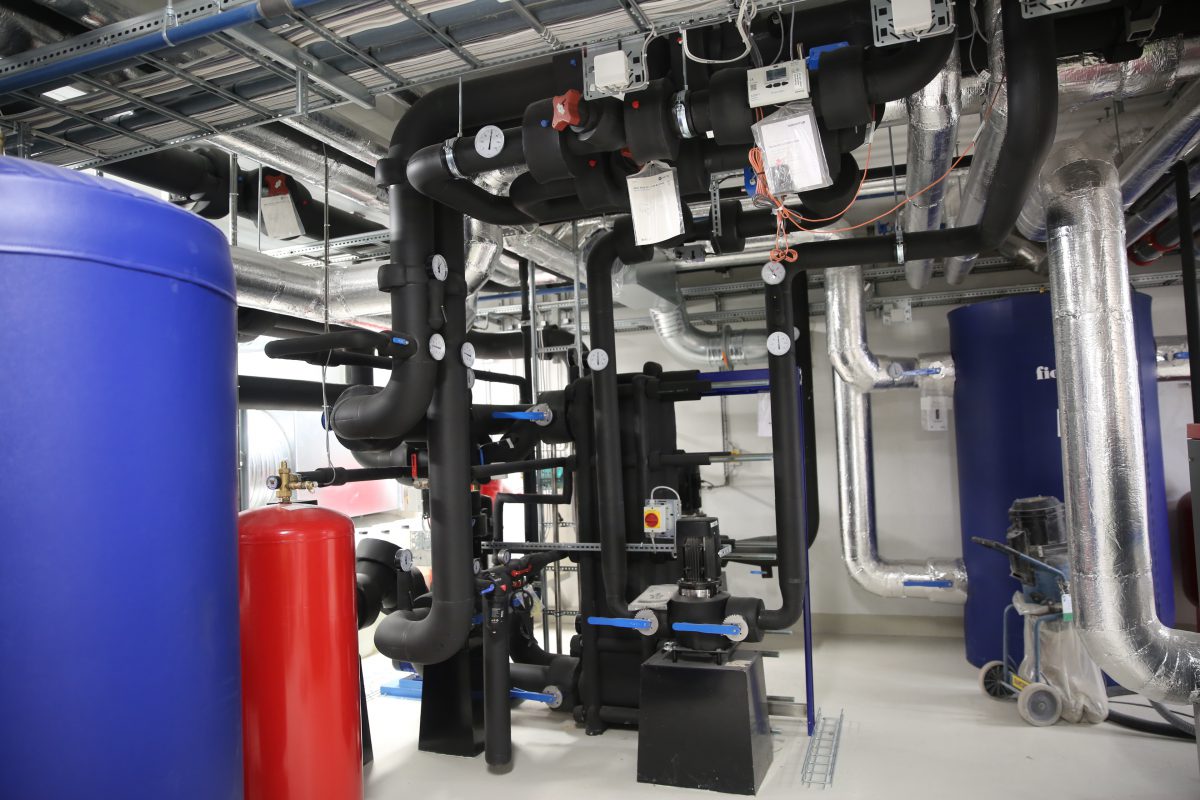Horten VGS’s energy-positive building brings BREEAM to Norway
Overview
The Horten VGS building is a brand new school for 1,200 students from 16 to 18 years old. It is a model project and VFK’s largest investment in energy-efficient new buildings. The aim for project is to pave the way for innovative solutions in future energy-efficient buildings, not just in the municipalities but in all of Norway. The building won Veidekkes Scandinavian Environmental Award in 2017 (Veidekkes Miljøpris) and achieved a BREEAM rating of Outstanding.
About
Vestfold County Municipality (VFK) in its capacity as a community developer and project owner of Horten VGS aspires to green economic development in Vestfold County illustrated with an ambitious vision: “Vestfold – the green county of Norway”.
Background
The New Horten Upper Secondary School (Horten VGS) will cater to 1.200 students ranging from 16 to 18 years old as well as 200 employees. The school will offer programs ranging from academic and vocational education, among them Sports, Academics, Health and Adolescence, Technology and Industrial Production, along with a department specializing in Work Life and Everyday Training for special needs students.
Along with VFK’s Regional plan for climate and energy this vision will contribute to actors such as local businesses, municipalities, county, state and its citizens to take shared responsibility for reducing greenhouse gas emissions and energy consumption.

Solutions
Horten VGS was constructed according to the following principles:
Collaboration: The school offers an organised collaboration with the municipality in the form of common meeting venues for the school’s employees, students and local citizens alike.
Learning and social skills: The school itself challenges its users to take advantage of varied teaching methods, promote positive student behaviour and facilitates engaging and stimulating learning activities.
Function: The school facilities are designed for constructional and technical changes for the building to adapt according to changes in academic curricula, program structure and capacity.
VFK attained a BREEAM-certification at level Outstanding by fulfilling its purpose, values and visions for the school. The BREEAM-manual enables the contractor to reach beyond expectations for favourable solutions and is a rewarding tool for vetting of potential contractors. Furthermore, BREEAM safeguards a complete implementation of both planning and construction phases, high quality in the end product, and focuses on lasting solutions with low operating costs. In the interest of enabling a provident and sustainable school, Horten VGS is designed as an energy-positive building (in accordance with Futurebuilt’s definition of +2kWh/m² annually). The excess energy will be distributed back to the grid in collaboration with the electricity supplier. The school has extensive use of wooden materials and an energy robustness with comprehensive use of passive measures which reduces the total energy use for heating, cooling, lighting and technical equipment.
Horten VGS is a model project and VFK’s largest investment in energy-efficient new buildings. The purpose being that the project will pave the way for innovative solutions in future energy-efficient buildings, not just in the municipalities but in all of Norway.
The BREEAM categories with the highest score in the project are Management (100%), Pollution (100%), Energy (96%) and Health and wellbeing (89%). The following measures are emphasized as central to the project strategy as well as innovative, new and replicable in future energy-efficient buildings.
Energy efficiency
Solar (PV) panels installed on the roof of the school have a calculated electricity production of 581.500 kWh/year. The school will produce more electricity than needed and will all surplus to the grid. The building has achieved 12 credits in BREEAM issue Ene 1. The building’s net energy demand for heating and cooling has been calculated according to the passive house standard. The school has an extensive use of displacement ventilation. The ventilation principle allows for the air to be supplied in a slightly higher temperature than the traditional ventilation strategy used in Norway, mixed-mode ventilation, while still achieving satisfactory indoor climate. This allows for reduced energy to ventilation cooling. Energy-efficient lighting with active light control through motion and daylight sensors will be installed. The heating and cooling system consists of low temperature floor heating and high temperature cooling system which facilitates high-efficiency energy production and low heat loss. Use of medium depth geothermal wells (approx. 300 meters deep) provides conditions for energy-efficient heat production. High-efficiency heat production from heat pump with heat absorption from well park (SCOP approx. 4,5) as well as free cooling from the geothermal wells (expected SCOP 10) gives an energy efficient heating and cooling system.
Indoor environmental quality
The building is constructed to enable quality daylight exposure (DF>2,1%) and a healthy indoor climate for students and staff. The building has highly-placed windows, which can be manually opened to allow the users to vent rooms when necessary. This allows for good air distribution with low draught risk. There is waterborne floor heating placed under light floor constructions which secure a good response rate of the system. There are high requirements for materials used in the building and eight out of eight product categories will meet the relevant standards for VOC emissions, including for instance wood panels and flooring, sealants and flooring adhesives.
Project management
The developer’s form of procurement was central in achieving the desired functional requirements. The project was announced as a design- and pricing competition, enabling the contractor’s team to shape the project from the beginning to meet specific technical and design targets. As BREEAM Outstanding was a target from the start, all available BREEAM credits were targeted from the beginning. A well planned and comprehensive commissioning of technical installations in the project is required. There will be installed an advanced and flexible system for energy monitoring that will be utilised in the building operation to minimise and monitor overall energy use. The system will visually present the energy use continuously for students and staff to inform and engage the building users’ awareness.

